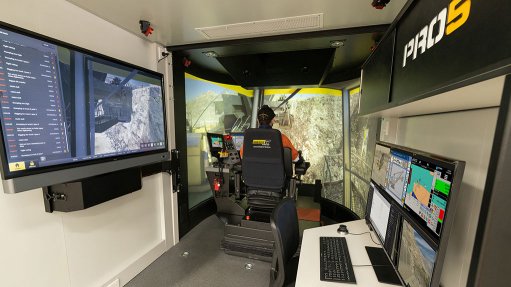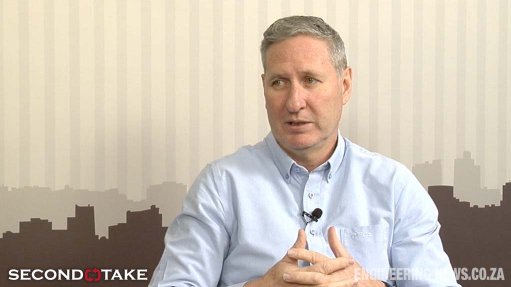Automotive sector calls for greater policy support to roll out EVs
Panelists discussing the automotive manufacturing sector during the Manufacturing Indaba on October 25 agreed that South Africa needs a strong directive and specific targets related to infrastructure development for electric vehicles (EVs).
Currently, there is no roadmap envisioned for the transition to EVs in South Africa, with the Automotive Masterplan only making reference to a target of achieving 1% of global production and the National Development Plan only speaking in broad terms about the energy transition overall.
“We need direct policy supporting the automotive sector with clear targets over five- and ten-year terms. In Norway, for example, government policy has helped the country to breach the price parity gap between EVs and internal combustion engine (ICE) vehicles, using a number of instruments,” explained nonprofit organisation Electric Mission executive director Hiten Parmar.
He added that South Africa had the Just Energy Transition Partnership that could help to drive the electrification of vehicles and electrified infrastructure further and that government did not necessarily have to lay out revenue for the advancement of EVs in the country.
Parmar noted that it was not only beneficial to introduce e-mobility solutions for passenger vehicles, but also trains, aviation, marine vessels and buses, particularly since existing models of transport are changing with a new generation of consumers that opt to use services instead of owning assets, which paves the way for electric public transport initiatives.
Touching on the issue of loadshedding that was often a concern among stakeholders discussing EV adoption, Parmar said loadshedding has actually served to increase the amount of renewable energy in the country as well as grid security, which are both crucial for EVs.
“In the last 12 months, about 6 GW of solar panels have been imported into South Africa, which is a power station on its own. Loadshedding has laid the foundation for EVs in the future.”
He further stated that, in the African context, South Africa had a legacy of automotive manufacturing and long-standing business models that had worked, which made it more challenging to transition than other countries that do not have automotive manufacturing legacies built on fossil fuels.
He warned that South Africa may lose its competitive edge in automotive manufacturing to other regions that are capitalising on the new energy vehicle (NEV) transition at this moment.
National Association of Automotive Component and Allied Manufacturers CEO Renai Moothilal said the automotive sector had historically been one of the few sectors to receive targeted government support in the form of tax incentives and other instruments.
He was confident that South Africa already had the technical and engineering expertise to modify production lines for NEV production, with the right government support.
However, without greater industrialisation across Africa to extract and beneficiate materials on the continent, the sustainable future of the South African sector on its own becomes questionable.
Moothilal said the automotive sector was able to develop up to this point based on strong government leadership, and hoped more coordinated State support would follow for NEVs. He cited Australia as an example of having stopped providing State support for its automotive sector, which led to the demise of an entire industry in a short time.
He agreed with Parmar that the rise of shared mobility and shared business models were disrupting the automotive industry, but were also creating new opportunities at the same time.
“As we look to enter the NEV space, we should look at it from a value chain capturing perspective and not seeing what will simply be the easiest to manufacture,” Moothilal pointed out.
Absa transport and logistics specialist Bernard Vilakazi said the transition to NEV manufacturing imposes a high financial burden on original-equipment manufacturers operating in the country, the solution to which would be more joint ventures and private sector partnerships with banks, for example.
He also advocated for more new energy-type skills to be taught at basic education level through to higher education level, since manufacturers are currently developing a limited skills pipeline by itself.
Vilakazi added that not enough knowledge and information was being provided to consumers about the benefits of using NEVs. He hoped that more institutions would get behind marketing for EVs and enabling finance for these vehicles.
“Even banks need to evolve to understand what they are financing, by going out and meeting stakeholders, as well as tapping into research and development initiatives,” he highlighted.
Charging infrastructure solutions company Everlectric cofounder and CEO Ndia Magadagela said although South Africa had been slow to adopt EVs compared with countries such as Norway and China, EV sales had nonetheless picked up dramatically in recent years. In 2021, less than 1 000 EVs were sold in the local market, but this number shot up in 2022 and further in the first six months of 2023, with the first half of the year alone having observed the sale of 3 000 EVs.
“Looking at the total EVs registered in South Africa, it is a drop in the ocean, but the trend towards EVs is growing. We are seeing a greater uptake of NEVs particularly in the commercial space, with companies finding these vehicles more efficient and cleaner, when doing a certain number of kilometres,” she explained.
Notably, she pointed out the importance of local manufacturers needing to adapt to target markets and what they were looking for. If those markets were moving to prefer EVs or NEVs, then manufacturers needed to start moving production to this effect.
For example, Magadagela pointed out that consumers may be expecting charging accessories to be included in the purchase of a vehicle, which means manufacturers will have to start partnering with these kinds of product providers through joint ventures to supply these additional requirements beyond a vehicle.
Industrial Development Corporation automotive and transport equipment head Joy Balepile agreed that the automotive sector was going through a period of rapid transition, citing estimates that the industry would change more in the next few years than it had in the last 100 years.
He lamented the issue of getting to a point of price parity, saying that battery EVs were almost 50% more expensive than ICE vehicles of the same model. He believed this to be a good starting point for government, to do away with excessive import duties for NEVs.
Considering the fact that NEVs will be more expensive for the foreseeable future, Balepile said financial institutions would have to assist customers in adopting the vehicles, as well as government through policy instruments to bring down the price and to support local NEV component manufacturing.
He also suggested working with trade partners such as the European Union to help support the EV transition.
Balepile concluded by saying there also needed to be more policy coherence between countries in Africa, since some of the key minerals for batteries could be mined and beneficiated in the region, even in those that did not have their own automotive industries.
Comments
Press Office
Announcements
What's On
Subscribe to improve your user experience...
Option 1 (equivalent of R125 a month):
Receive a weekly copy of Creamer Media's Engineering News & Mining Weekly magazine
(print copy for those in South Africa and e-magazine for those outside of South Africa)
Receive daily email newsletters
Access to full search results
Access archive of magazine back copies
Access to Projects in Progress
Access to ONE Research Report of your choice in PDF format
Option 2 (equivalent of R375 a month):
All benefits from Option 1
PLUS
Access to Creamer Media's Research Channel Africa for ALL Research Reports, in PDF format, on various industrial and mining sectors
including Electricity; Water; Energy Transition; Hydrogen; Roads, Rail and Ports; Coal; Gold; Platinum; Battery Metals; etc.
Already a subscriber?
Forgotten your password?
Receive weekly copy of Creamer Media's Engineering News & Mining Weekly magazine (print copy for those in South Africa and e-magazine for those outside of South Africa)
➕
Recieve daily email newsletters
➕
Access to full search results
➕
Access archive of magazine back copies
➕
Access to Projects in Progress
➕
Access to ONE Research Report of your choice in PDF format
RESEARCH CHANNEL AFRICA
R4500 (equivalent of R375 a month)
SUBSCRIBEAll benefits from Option 1
➕
Access to Creamer Media's Research Channel Africa for ALL Research Reports on various industrial and mining sectors, in PDF format, including on:
Electricity
➕
Water
➕
Energy Transition
➕
Hydrogen
➕
Roads, Rail and Ports
➕
Coal
➕
Gold
➕
Platinum
➕
Battery Metals
➕
etc.
Receive all benefits from Option 1 or Option 2 delivered to numerous people at your company
➕
Multiple User names and Passwords for simultaneous log-ins
➕
Intranet integration access to all in your organisation

















